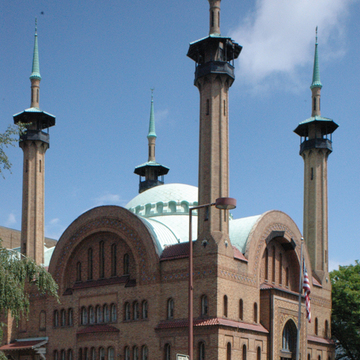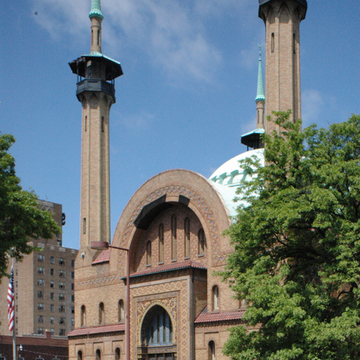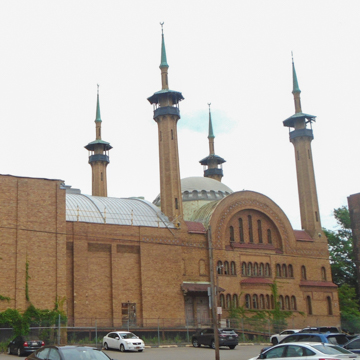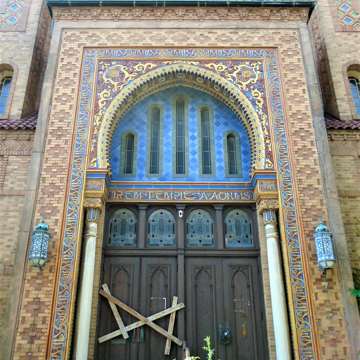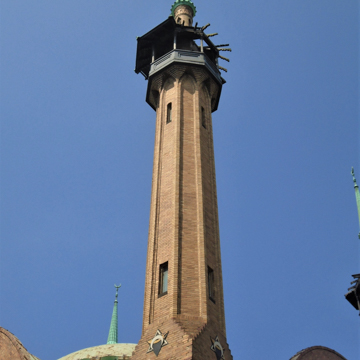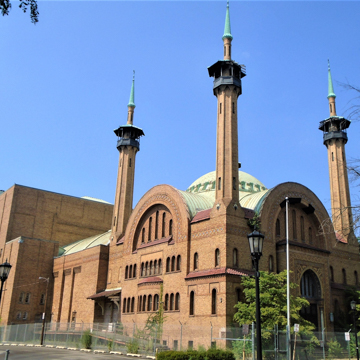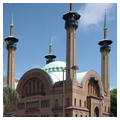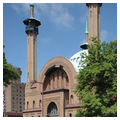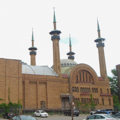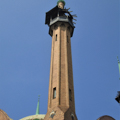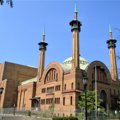From its spiky minarets to its great dome in bright orange brick, there are few more remarkable buildings anywhere in Pennsylvania than this hall and auditorium for fraternal orders. An Islamic fantasia that borrows details from across the whole range of the Muslim world, it is more akin to stage scenery than architecture. In fact, F. Willard Puckey's original watercolor rendering showed the building not on Franklin Street but in the midst of a desert peopled by Bedouins on camels—precisely the exotic imagery that his clients desired.
You are here
Irem Temple
If SAH Archipedia has been useful to you, please consider supporting it.
SAH Archipedia tells the story of the United States through its buildings, landscapes, and cities. This freely available resource empowers the public with authoritative knowledge that deepens their understanding and appreciation of the built environment. But the Society of Architectural Historians, which created SAH Archipedia with University of Virginia Press, needs your support to maintain the high-caliber research, writing, photography, cartography, editing, design, and programming that make SAH Archipedia a trusted online resource available to all who value the history of place, heritage tourism, and learning.


